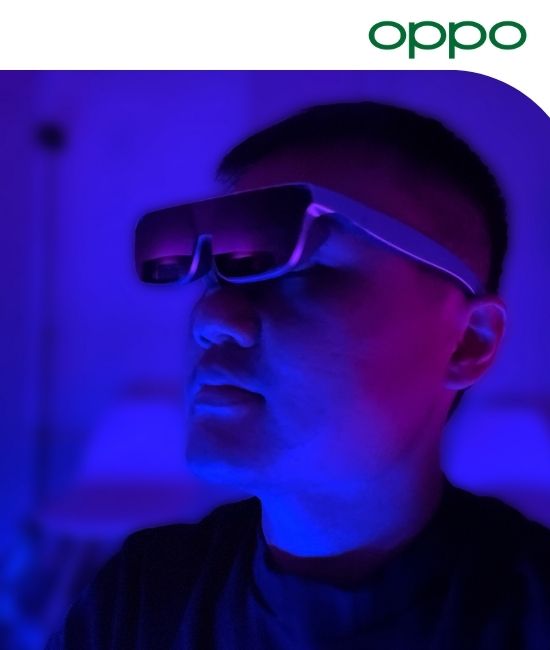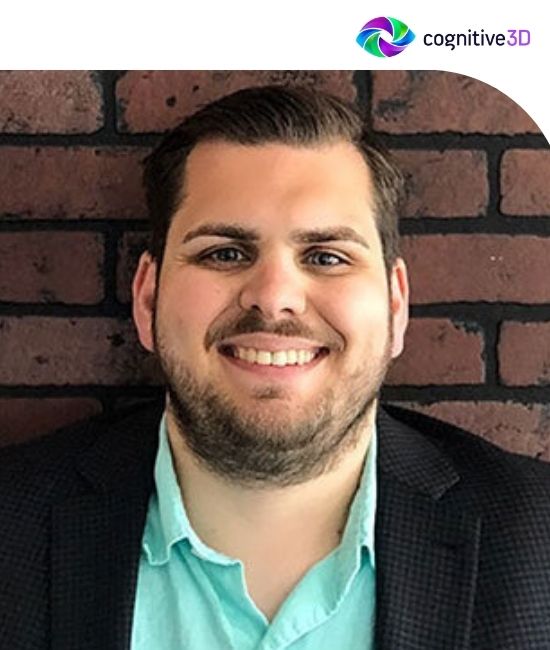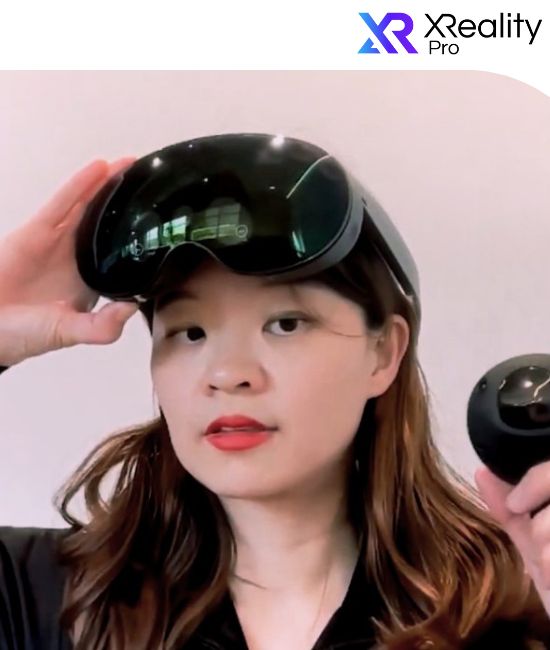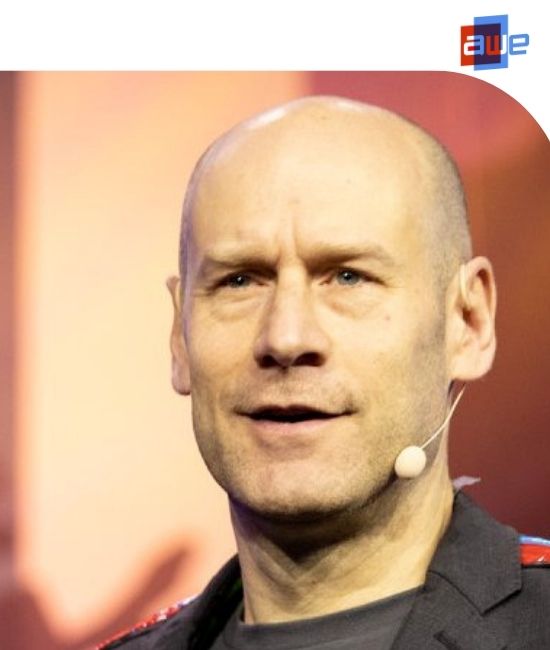01:45 PM - 02:10 PM
Description
RPR joined forces with the Microsoft Mixed Reality Capture Studio to create a hologram of Siduri Wine’s founder, Adam Lee, for a first-of-its-kind webAR experience. We fused Adam’s hologram with photorealistic, 3D content in the real-world and made it easily accessible through WebAR. Through the experience working with Siduri and Microsoft, we learned a lot about best practices of developing a WebAR experience with holograms and we'd like to share them with you. Try It Now at www.siduri.com/ar
Speakers

01:45 PM - 02:10 PM
Description
Augmented reality has proved to be an exciting area of development for all major technology companies. Pioneers like Facebook are looking towards developing smart glasses in their quest to create the Metaverse concept.
However, headset manufacturers still need to overcome key challenges to reach consumer and enterprise mass adoption. Current AR/MR headsets rely on stereoscopic techniques to produce ‘3D-like’ images that lack real depth, causing them to appear disconnected from the real world.
In this presentation, VividQ COO Aleksandra Pedraszewska discusses how recent advances in Computer-Generated Holography offer the best solution to overcoming these challenges. New cutting-edge developments in holographic display mean users can experience true 3D virtual projections that blend seamlessly with the real world, retaining the same depth information our real eyes perceive. We will explore the principles behind holography, and how recent innovations in the technology are used in AR wearables today.
Speakers

01:45 PM - 02:10 PM
Description
Ask any teaching or training professional, they would argue that the success of their students isn’t just about maximizing the speed at which they learn, but that they pay attention for enough time. Homework is designed for that purpose: to force you to spend enough time paying attention to the subject. For employee training programs it is a bit more complicated: while some are scored with tests, they have found that real world training success rates track closer on training “engagement” — a measure of how much attention was paid. Indicators of real world success rates include time to first satisfactory “production” execution, mean time between execution failure, and rework rate.When visually engaging training tools are used, net success rates go up, and training times to reach competency go down. And that is why augmented reality works so brilliantly for training. It is both engaging and visual, a stimulating graphical superposition of the computer world on top of the real one. When you add the standard internet advantages of anytime & anywhere, you open up order-of-magnitude gains to your organization.
Speakers



01:45 PM - 02:10 PM
Description
As one of the world's largest smartphone companies, OPPO is dedicated to building the Vision for AR. OPPO has announced two AR products since 2019 and has consistently pushed boundaries in delivering the best tools for the community. Learn more about their latest efforts and progress in building the hardware, platforms, algorithms, and tools to empower the OPPO AR community.
Speakers

02:15 PM - 02:40 PM
Description
There’s a massive paradigm shift in how the world experiences, communicates and consumes media. Society today has a deep psychological need to interact and communicate with the everyday world, craving immersive entertainment experiences. This is a motivating reason as to why the entertainment industry is integrating MR in gaming, sports, theme parks, and more. As we look ahead to the future of the entertainment industry, users will truly be able to experience the everyday world without headgear or 2D displays creating a separation from live experiences.
In this session, Jon Karafin, CEO and founder of Light Field Lab, will speak to the next generation of display technology – a true dimensional holographic experience indistinguishable from reality. Going beyond 2D displays and flat screens, the future of entertainment is dimensional holographic displays that escape the screen to create hyper-believable, real-world interactions. The future is all about immersive media and technology from cinemas and live theaters to theme parks and gaming centers – ultimately every display will be a true holographic experience.
Speakers

02:15 PM - 02:40 PM
Description
FXG (tech side) and Hope for Haiti (non-profit side) created a VR app for social impact in Haiti. We have replicated a Haitian school with interactive elements . The experiential app is modeled off one of Hope for Haiti's partner schools in rural Haiti, along with a recreated landscape and environment. Users can explore the three room school, interact with different elements such as a well, chalkboard, flag pole, and other exploratory features. The space is designed to not only provide an engaging and hands-on experience, but also to give users an alternative (and more positive) perception of Haiti, by building an emotional connection to the environment, through the immersive powers of virtual reality technology. There is a dedicated classroom that contains multimedia elements to highlight the work of Hope for Haiti in the community through video, photos, audio, and engaging vignettes. An event was curated inside of the space, alongside an online, NFT auction, featuring donated artworks by various artists and public features, with the goal of raising 50k USD to provide 7,000 children across Haiti with the resources, supplies, and clean water that they need in order to have a successful school year.
Speakers


02:15 PM - 02:40 PM
Description
Steve Lukas from Qualcomm Technologies will talk you through design considerations and the tools that will open your third eye of AR. Learn about the unique design concepts for bringing your mobile app into augmented reality.
Speakers

02:15 PM - 03:10 PM
Description
Our panel of seasoned experts will address questions about the future of XR gaming. What are some of the most interesting opportunities in XR? How can XR be more social? How do you survive the experimental stage? How do you handle privacy and empathy? Our speakers include Sonya Haskins of VR Fitness Insider, David Levitt of Pantomime Corp., Tommy Palm of Resolution Games, and independent XR developer Patrick Hackett. Dean Takahashi of GamesBeat will moderate the session.
Speakers





02:35 PM - 03:00 PM
Description
Virtual reality (VR) implementations greatly matured over the past few years and it's been able to transform the way people learn. Enterprises are now forced to adopt VR to provide the best training for their employees. To take full advantage of VR training, it needs to be connected to the rest of the organization and included in the employee’s daily learning experience.
But taking VR from proof of concept to scale comes with challenges. Previously, enterprises only needed to focus on exploring the viability of VR. In order to deploy VR training at scale, they need to demonstrate its effect on the bottom line. You need a comprehensive method for tracking and measuring success within VR. The outcomes should be mapped against processes, objectives and compliance requirements. Then tied into existing legacy learning management systems. (LMS)
This presentation will walk through the three stages of scaling VR training: implementation, measurement and distribution. The successful deployment of VR training will depend on support from stakeholders and solving real business challenges. This presentation will also take an in-depth look at our case study with a medium-sized power utility company in the US where we increased knowledge retention by 59% and compliance by 40%.
Speakers

02:35 PM - 03:00 PM
Description
Going to the hospital as a kid is never fun, however, pediatric facilities such as Children's Hospital Colorado are utilizing XR tech such as Augmented and Virtual Reality to change the pediatric hospital experience for the better. From distraction, pain management and Physical Therapy, to reducing the need for anesthesia; the use cases for immersive technology in pediatrics continue to grow every day. However, in order to continue this exciting evolution in patient care, healthcare institutions and developers must work together to make considerations and content that caters to the specific needs of children in the hospital, while also remaining engaging and fun!
Speakers

02:35 PM - 03:30 PM
Description
A discussion on empowering communities through accessible tools that create meaningful connections, new worlds and experiences, and inclusive environments.
Meet the creators and leaders of the metaverse and get to know the tools that help them amplify voices from all around the world.
Speakers





03:05 PM - 03:30 PM
Description
Gamified experiences are the norm for effective XR content. What's the motivation behind it and how XR products applied gamification to make the content more engaging? In the post-covid era, how can gamification level up your business and create memorable products that keep your users coming back? Let's find out!
In this session, I will talk about:
1. What is gamification?
2. Motivations
3. Gamification in XR
4. VR Simulation
5. AR Gamification
6. Q & A
Speakers

03:05 PM - 03:30 PM
Description
Virtual reality provides mental health clinicians with a virtually unlimited array of possibilities for in-session use. The expertise of a clinician, when paired with a customizable, interactive, immersive environment, allows the client to process and work through a plethora of difficulties. This presentation will introduce the participant to the Virtual Sandtray-VR program and demonstrate examples of use with PTSD, phobias, and adjustment disorders.
Speakers

03:05 PM - 03:30 PM
Description
Today’s AR displays provide an incomplete illusion of 3D content which leads to visual conflicts with the real world and confusion of our vision. The 3D illusion is only stereoscopic created by two flat images without natural focal depth. This absence of natural depth cues threatens the acceptance of consumer AR due to the unnatural, unpleasant, and unhealthy visual experience. We will explain the adverse effects of visually incorrect AR images and present the solution to this problem with light-field display that is an efficient and simple way of generating optically correct high-resolution real-world-like imagery suitable for both AR and VR devices.
Speakers

03:35 PM - 04:00 PM
Description
For the efficient metaverse digital twin, the digital world should be connected to the real world around and near you. The more we get to know what is con and pro about the current metaverse platform and content, the better we understand how important your local real world is. Which is, the bigger the metaverse gets, the smaller the real world is. The O2O location-based XR immersive platform is able to make it even.
1.Con and Pro of the current Metaverse Platform
2.Current Trend of Location-based XR Business Model
3.Solution and Suggestion
4.Introduction of NORI CUBE and Meta Class
5.Matter of Content, NFT
Speakers

03:45 PM - 04:00 PM
